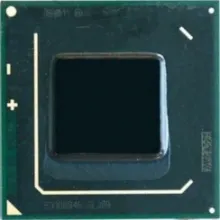
The Mobile Intel® QS67 Express Chipset is a component designed for mobile computing platforms, offering advanced features and capabilities for laptops and other portable devices. This chipset is part of the Intel 6 Series Chipset family, catering to the needs of high-performance and power-efficient mobile systems.
One prominent feature is the support for Intel® Active Management Technology (AMT), enabling remote management and diagnostics. This is particularly valuable for IT administrators overseeing a fleet of mobile devices, allowing them to maintain and troubleshoot systems efficiently, even when the device is not actively in use.
Security is reinforced through Intel® Trusted Execution Technology (TXT), creating a secure execution environment to protect against various security threats. This is essential for mobile devices that often handle sensitive information and are susceptible to security risks.
Intel® Virtualization Technology (VT-x) is integrated into the QS67 chipset, optimizing virtualization performance. Mobile systems leveraging virtualization benefit from improved efficiency and resource utilization, making them suitable for a variety of professional applications.
Storage capabilities include support for Serial ATA (SATA) 6Gb/s interfaces, offering high-speed data transfer for storage devices like solid-state drives (SSDs). RAID configurations enhance data protection and system reliability, critical for mobile professionals requiring a dependable computing environment.
The QS67 chipset also incorporates Intel® Flexible Display Interface (FDI), supporting flexible connectivity to integrated graphics. This feature facilitates multiple display configurations, enhancing the visual experience for users who require a dual-monitor setup or similar configurations for productivity.
Power efficiency is a key consideration in mobile computing, and the QS67 chipset is designed with features to optimize energy consumption. This includes dynamic power management and efficient handling of system resources to extend battery life and improve overall energy efficiency.
